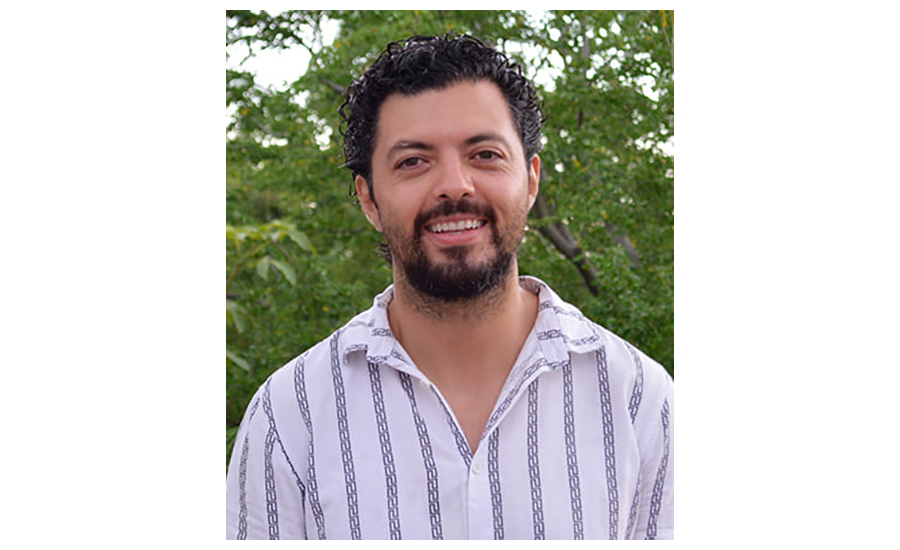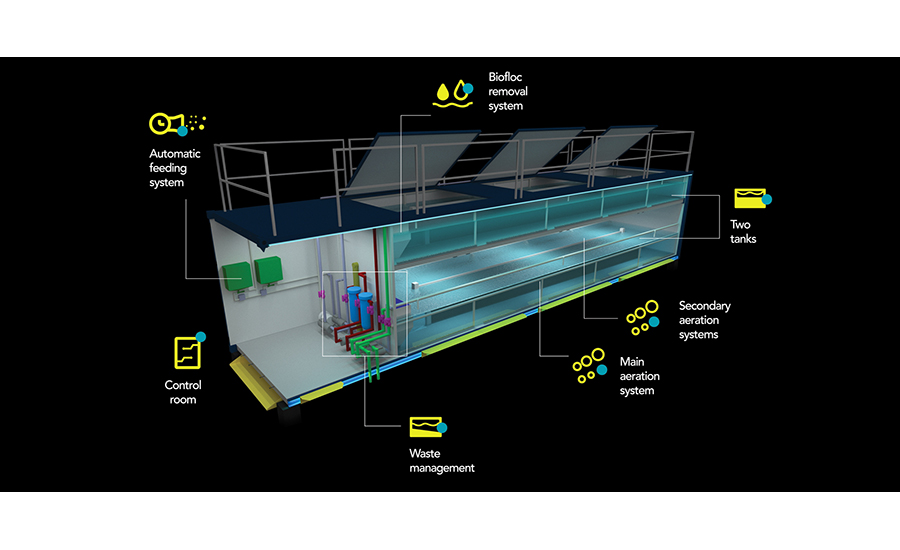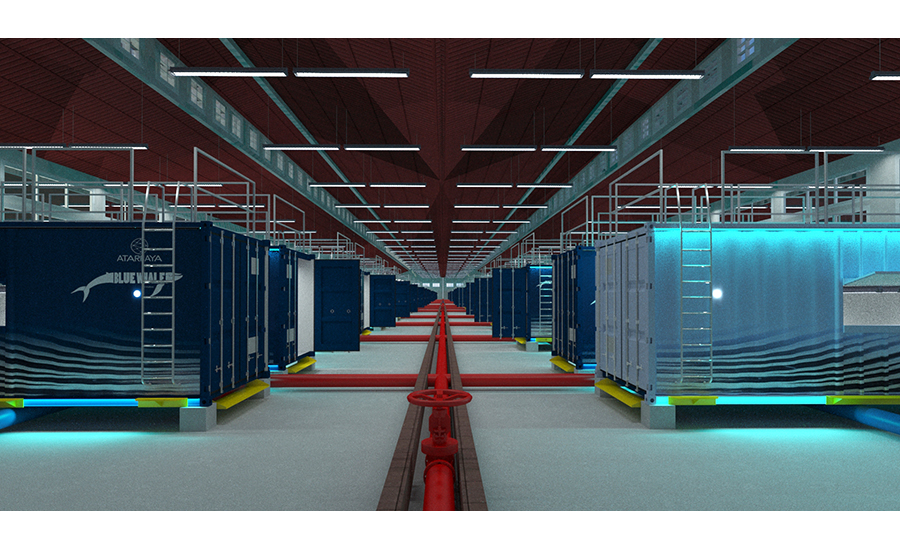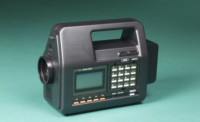I love shrimp. However, the news lately has been somewhat off-putting with stories of contamination from heavy metals, bacteria, viruses, antibiotics and other environmental issues. As if that weren’t enough, one Google search for “shrimp farming problems” brought up the following from worldwildlife.org: “A steady stream of organic waste, chemicals and antibiotics from shrimp farms can pollute groundwater or coastal estuaries.”
Not exactly comforting words if you’re environmentally concerned and want to buy shrimp from responsible shrimp farms that practice good stewardship of our planet. Buying wild shrimp doesn’t help our overfished oceans either; think about the netting used to catch wild shrimp. Along with 1 lb. of shrimp, anywhere from 6 to 20 lbs. of other ocean wildlife are also trapped and die, according to the Monterey Bay Aquarium.
A relatively new startup company has been working to solve some of the problems caused by traditional shrimp farming. Atarraya, creator of Shrimpbox, a sustainable “plug-and-play” technology and the aquaculture equivalent to agriculture’s vertical farming, has combined modern biotechnology with AI-based software, engineering and automation to create a modular and scalable solution to shrimp farming.
The first Shrimpbox prototypes, assembled in the coastal community of Guapinole, Oaxaca, Mexico, are already in operation. A Shrimpbox farm for training and demo purposes is also slated to open later this year in partnership with the State of Indiana’s IEDC (Indiana Economic Development Corporation).
“We’ve spent the past 10 years diligently working to bring Shrimpbox to market and are now ready to begin rolling it out at industry-level scale,” says Daniel Russek, CEO and founder of Atarraya. “Our proprietary technology decreases the environmental impact and cost of traditional shrimp farming or trawling. It allows for the production of fresh, sustainable and local shrimp farms to be set up anywhere in the world as a vertical aquaculture farm that generates nearly 10 times the return on investment to farmers.”

FE: Daniel, how and when did you decide that you wanted to start an environmentally sound shrimp farming system? How much later did you start Atarraya? Where did you start the company?
Daniel Russek: In 2009, after four years of work with fishermen/Afro-Mexican communities on the coast of Oaxaca, I realized the huge market opportunity in shrimp. I also learned that wild catch was a dead end and that traditional shrimp farming destroyed coastal ecosystems at an unbelievable scale.
FE: Alternate proteins have been in both our news and the public news. In fact, some companies are attempting to grow fish and seafood in lab cultures. Do you think people would rather have the real thing? Do you see any competition from cultured seafood?
Russek: I think it’s good to have options. But unless 100% of the world goes vegan, we need sustainable solutions for animal protein. I think these products and technologies have the burden of proof for some critical questions: Is it scalable? Is there a massive market for it? And, most critically, what is the nutritional value of these products? The world is enduring an obesity epidemic, and the best available evidence suggests that the main driver for that epidemic is the massive availability of “edible, food-like substances” (a term borrowed from author Michael Pollan).
FE: Shrimp farming is potentially as detrimental to the environment as dragging nets in the ocean to catch wild shrimp. How does Shrimpbox compare with typical methods of shrimp farming and wild-caught shrimp in terms of production efficiency, output and quality?
Russek: The best way to illustrate this is using a rough comparison in terms of surface area and other impacts. Suppose you would want to supply 100% of shrimp demand (8 million tons) with only one method:
Wild catch: You would need to scrape the bottom of the ocean every year on a total surface that would amount to a dead zone roughly the size of India. You would also kill 5 to 10 times as many tons of other wildlife as “collateral damage.” Also, you need to move all products across the world to market.
Traditional shrimp farming: You would need an area that is about the size of Israel and pollute the ocean on a scale of a country of 40 million. Also, you’d wipe out many of the remaining mangrove forests in the world. You still need to move all products across the world to market.
Shrimpbox: You need an area of roughly two to three times the size of Disneyworld in Florida, without any connection to the environment. This would increase global shipping containers by 3%. But you wouldn’t need to move frozen shrimp across the world.
FE: Can you describe the basic operation of Shrimpbox? How does it work?
Russek: Shrimpbox is a life-support system in which the goal is to maintain the homeostasis of a complex ecosystem, which is a microbial community (biofloc), and the targeted species in this case is shrimp. Therefore, Shrimpbox relies on four main systems—aeration, filtration, water quality measurement and feed distribution—which are guided by a cloud-based expert system. For example, acceptable operational parameters for water quality are specified by biotech protocols that are then programed as algorithms in the system. These variables are measured by sensors in Shrimpbox that relay the information to the cloud system, the data is compared to the benchmark, and in case an intervention is needed, instructions are transmitted to computing systems in Shrimpbox that rely on specific firmware for each interactor to translate the desired new state into instructions to pumps, blowers, electric valves and other devices to respond. A similar workflow is needed for feeding strategy, solid management, temperature and many others.
FE: You’ve managed to put together biotech, AI-based software and automation/controls to create Shrimpbox. So how do all these interact in the process of keeping the shrimp alive, healthy and always maturing? Especially how does biotech enter into the operation?
Russek: Our company started with one technical question: How can we grow shrimp without the need for water exchange? That solves the sustainability question, as well as the never-ending epidemics for the shrimp issue.
Farmers need water exchange (dilution) to get rid of ammonia (inorganic nitrogen) which is harmful to shrimp. In nature, there are microbial communities that have evolved to use that ammonia to make new cells. We decided to bet on them. They basically act as a nitrogen sequestering system, and we take care of them by providing an ecosystem that can achieve a steady state as fast as we can. That enables this community to metabolize nitrogen effectively and fast. This microbial community interacts with shrimp health and potential pathogens and uses the protein in feed as fuel. Managing that is the core of our biotech.
The biotech protocols are very complex and involve the interaction of many variables, and decisions must be made considering the stage of the culture and many other considerations. Humans need training and tools to do that. So, we decided to turn our biotech protocols into algorithms for a cloud-based system. That is the software part. Our software system needs a way to get data from the production pond, and needs a way to interact with it in order to execute tasks. We use sensors, different systems and humans for that. That is the automation/engineering part. These three layers interact in order to maintain homeostasis in the system.
FE: How do the controls work? Does a person need to be onsite around the clock?
Russek: The main panel of the SB has all the controls necessary to run each part of the system on either manual or automatic operation, so it’s possible to do maintenance. In normal operation, every switch would be set to automatic. The system has a mechanical alarm with a siren and a push notifications alarm system that can send alarms to the Atarraya app to show users away from the site. There is both a main and a backup aeration system, loss of pressure in our aeration system is our main concern.

FE: You basically have created a very controlled environment. How are the shrimp fed? How do you remove the waste? How much waste is produced? What is the lifecycle of the growing period of a market-ready shrimp? How are new stocks procured?
Russek: We have designed our automatic feeders. They run according to instructions that come daily from the AI system of Atarraya that has the necessary information to determine the amount and frequency of feeding.
We don’t really have “waste” in our system; it’s a circular system that emulates how things happen in nature where someone’s “waste” is someone else’s “food.” What we have is an excess growth of biofloc that we have to extract from the tanks as biofloc consumes oxygen and there is a sweet spot where we like to be, so we have both decanters and skimmers to deal with our excess floc and proteins.
The amount of floc varies through the cycle, and both the decanter and skimmer turn on and off as needed. Roughly 10 liters of biofloc mixed with water would come out from each tank if both are on. The water gets routed to biodigesters and filters where much of it is recuperated to recycle back into the system.
We have our own larvae production operation in Mexico. We import the broodstock from the U.S. for our hatchery. The growing cycle is 2 to 3 months depending on size.
FE: How often is the water changed in the Shrimpbox? How would a producer deal with wastewater?
Russek: In an ideal cycle the water loss would be minimal, just by evaporation and the little need for the decanter and skimmer to work. That’s one of the big differences between traditional shrimp production and our methods. Wastewater is minimal. Excess biofloc can be used as a fertilizer.
FE: Speaking of environment, what type of local environment is required to operate a Shrimpbox system (e.g. dry, hot, cold, city, agrarian)?
Russek: Our first units were built in Mexico and hence they had no isolation. Now that we are starting operations in the U.S., we are adding isolation and heat exchangers to keep the heat inside the units, for now. Our aim is to be able to operate in warehouses or greenhouses.
FE: Since the system by virtue of its design is modular, how does a farm decide on how many units it needs? Are the controls separate for every Shrimpbox? How does a farm determine energy and water requirements to operate a Shrimpbox system?
Russek: A farm needs a minimum 20 Shrimpboxes to be profitable. After that amount, we can adapt to how big the market is going to be in each location and provide a system that is the right size for it.
The manual controls are separate for each Shrimpbox, and the automatic controls can be operated from the app anywhere.
Each unit has base energy and water requirements. The water usage depends on how well system health is maintained, and the energy requirement varies depending on the temperature it needs to operate at.
FE: Could this method be applied to growing other seafood (e.g. lobster)?
Russek: It might, but each species has its own challenges. We have focused on shrimp for more than 15 years, and we think it is the best species to put our efforts into.
FE: Is Shrimpbox available now? With all the supply chain issues we’ve seen, do you see any delays in bringing Shrimpbox to market?
Russek: That is of course a big challenge. Our first units were built in China, but for supply chain issues we had to move our production to Mexico. All the units in production now are going to our model farm in Indianapolis, so it’s not available to the public yet but we plan on ramping up the production.
The Shrimpbox nearshoring production in Mexico and the development of new manufacturers in the region would support our growth in the U.S. market.





